Santa Fe is a small mountain town in Panama’s Veraguas province, about a three-hour drive from Panama City. Veraguas is in the center of the country and the only province that spreads from coast to coast, the Pacific to the south and the Caribbean to the north.
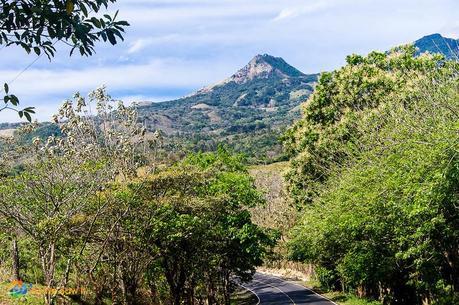
Yes, north and south. Check it out on a map; it’s no joke!
Getting to Santa Fe
If you are lucky enough to have access to a car, Santa Fe is only three hours away from Panama City. It will take two hours to get to Santiago (just head west on the Pan American Highway), and then another hour or so inland (north) to Santa Fe itself.
If you are relying on public transportation, on the other hand, it is just as easy but will take longer. Panama has an extensive and affordable bus system. You can take a bus from Albrook Terminal to Santiago and then transfer to a bus heading to Santa Fe. It will probably take about 5 hours to get there.
Once you leave the highway in Santiago, the road will wind north into the Veraguas Mountains. The drive is spectacular, so keep your camera ready. If you’re driving, allow plenty of time for photo ops.
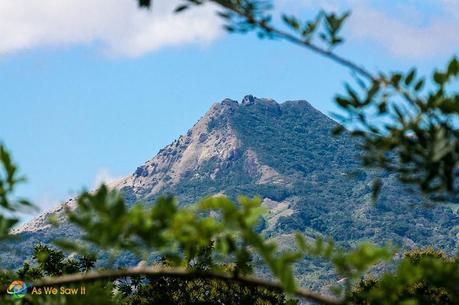
The town of Santa Fe
Like most towns in Panama, Santa Fe has all the modern amenities: electricity, clean drinking water, and high speed internet. But don’t let the modern conveniences fool you: Santa Fe is a traditional Panamanian town, complete with a laid back attitude, where horses are still commonly used.
As a matter of fact, we had a pleasant and unexpected surprise while we were hiking. Six cows and their escort came our way. We sure don’t see that in Panama City!
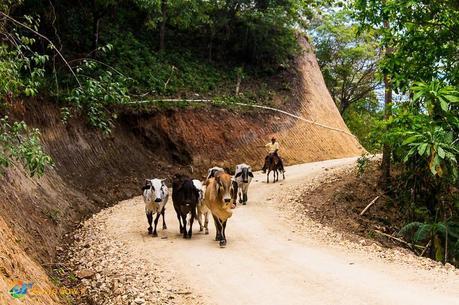
Cattle round-up, Panama style!
What to do in Santa Fe
The true charm about this town is that it is a place to get away from it all and enjoy unspoiled nature. While we were there we hiked to a waterfall, went swimming, tubed down one of its rivers, and visited an organic farm. Other options in the area include horseback riding, bird watching, 4×4 adventure tours, orchid gardens and even hiking to the Caribbean coast, but there’s only so much one can fit into a weekend.
We also enjoyed a truly memorable dinner when we ended up at a local place that was grilling an entire side of veal. Grilled meat al fresco with locals. What could be better?
Although some of the rivers look low in these photos, it can be deceptive. They can become quite dangerous during rainy season, when they become rapidly running torrents of water. Any time there are large areas of rocks along a river, it’s a pretty safe assumption that those areas are often flooded in season (April – November).
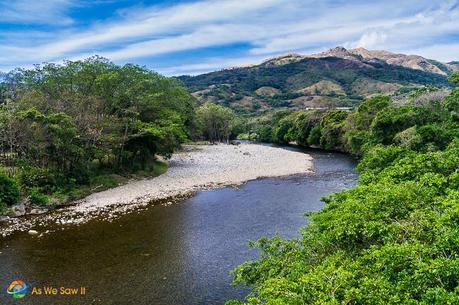
Our Santa Fe Veraguas Hike
I’m repeating Santa Fe Veraguas because otherwise Google thinks I’m talking about Santa Fe New Mexico. We’re talking Panama here, people … and actually, Panama has two! (The other is in the Darien, but only crazy people go there, lol.)
We spent our weekend in Santa Fe with two Dutch friends, Farieda and Linda. They love to hike as much as we do. It was such beautiful weather when we awoke on Saturday that we decided that it would be nice to spend a few hours walking in the mountains. We got directions to a swimming hole with a waterfall, and off we went.
We came across this footbridge along the way.
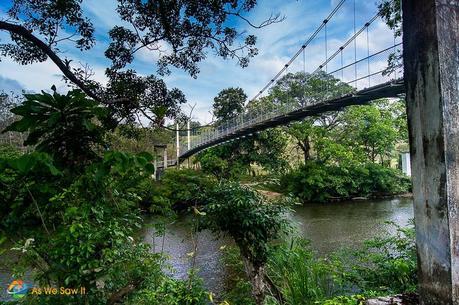
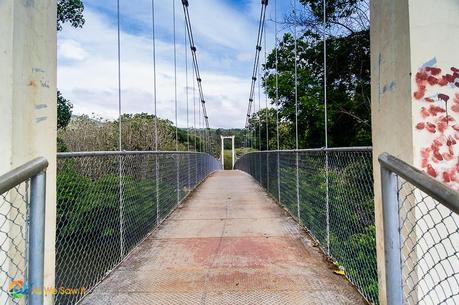
Santa Fe has its share of paved roads and concrete bridges. This is one of the typical footbridges that locals use to cross rivers in rural areas.

As we walked along we found plenty of great photo opportunities, including this view up the Santa Fe River from the foot bridge. If you take any photos from one of these bridges though, make sure no one else is walking on it or you will be making bouncing photos!
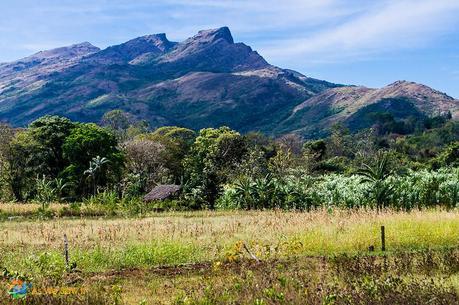
Small farm house nestled against the mountains in Santa Fe, Panama
Cattle farming is the main source of income in this area, but as you can see bananas also grow here. I wonder if they may be a remnant from the days when Chiquita bought its bananas from Central America and Panama was known as a “banana republic.” Since Chiquita left Panama has become a financial giant in the region. That said, although most construction in the country is of concrete or wood, many local campesinos (peasant farmers) are still resourceful and prefer to build their own houses out of free local materials. Hey, whatever works.
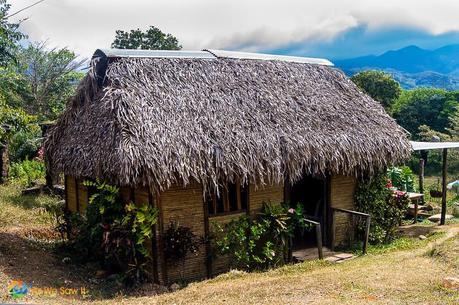
This was such a rural area that the only major sign of technology we found on our hike was this random phone booth. Obviously it was installed so the campesinos would have access to a phone in case of emergency.
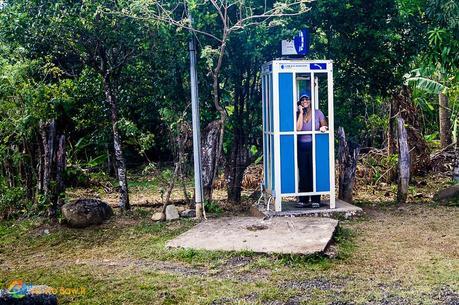
Hellooo … anybody there?
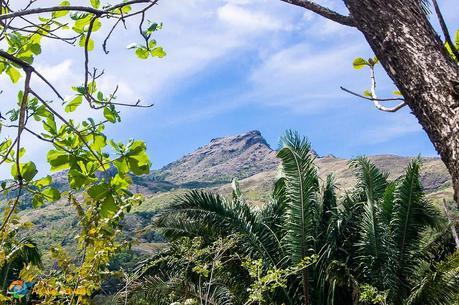
At our Veraguas swimming hole
After a long, hot and dusty hike our path finally approached the swimming hole. Unfortunately it ran along the top of a high ledge of rocks. With rocks at the shallow bottom it was obvious that we couldn’t lower ourselves or jump into from that side. Locals had beat us to the swimming hole and their waves indicated that we would need to enter from the far side.
So we followed the path further. It climbed for about 20 feet before leveling out at the top of the waterfall.

Looking back at our future refreshment, before we began our climb.
The water was moving hard and fast at the top. It seemed more sensible to cross from rock to rock than try to walk through the water and risk falling. Unfortunately, we found out the hard way that those rocks were far more slippery than they looked. It was a good thing we were hiking with friends because Linda slipped. It took all the strength of two of us to pull her out of the rapids before she was carried down the rocks and over the edge. The force of that rushing water was a lot stronger than it looked!
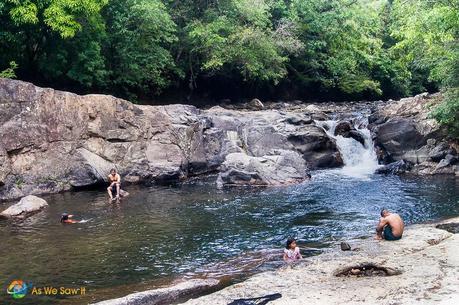
Our reward! Swimming hole in Santa Fe, Panama
Even though Linda had to slog back in wet sneakers, even she agreed that the it was worth the effort.
We have more photos of Santa Fe, Panama in our gallery. Please enjoy them.
(Visited 5 times, 5 visits today)Be sociable, share!Twitter11Facebook1Google+0LinkedIn1
